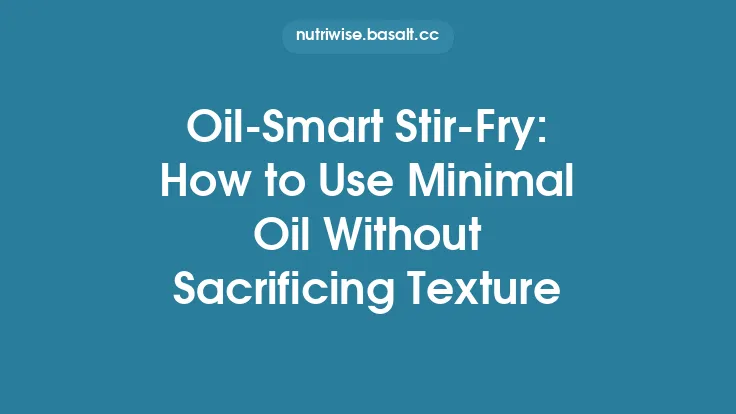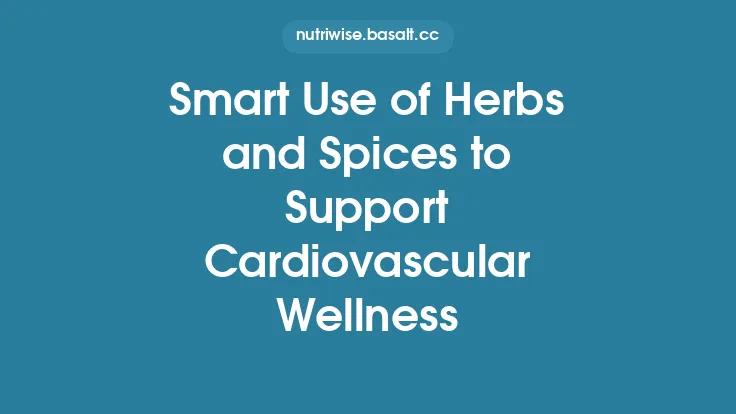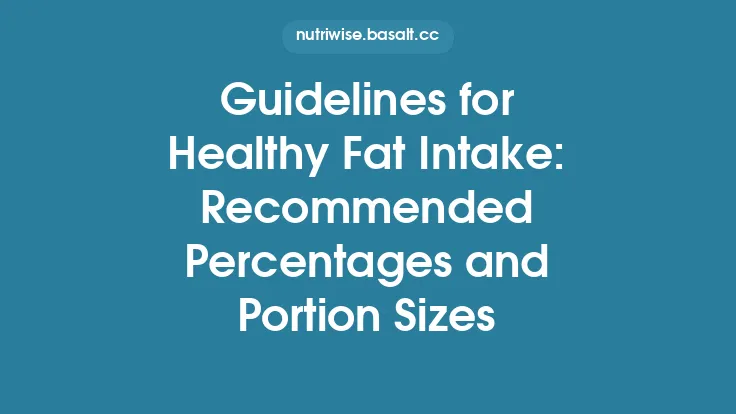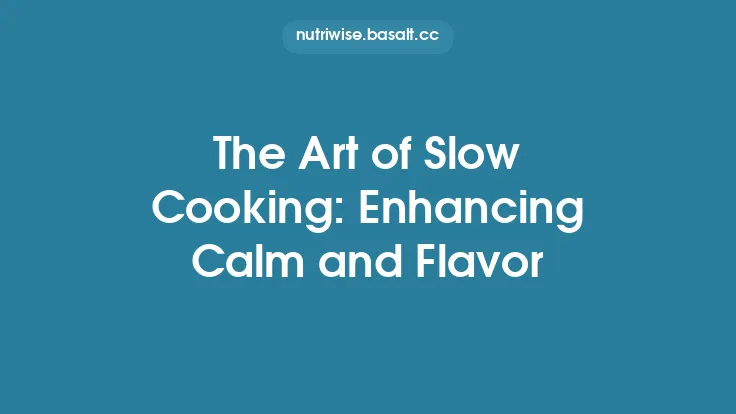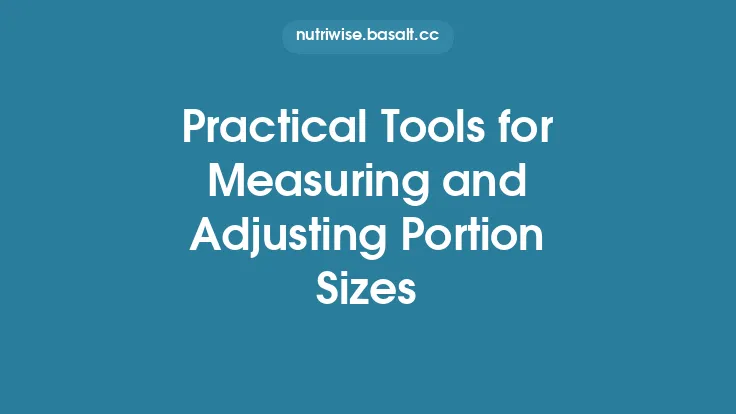When the goal is to keep meals light without sacrificing the mouth‑feel that a thin coating of oil provides, cooking sprays and mists become indispensable allies. Unlike pouring oil from a bottle—where a single tablespoon can easily slip past the intended amount—sprays deliver a fine, measurable veil that can be calibrated to the exact needs of a recipe. Mastering that calibration, however, requires more than a casual “spritz and go.” It involves understanding the physics of the spray, reading the nutrition label, and sometimes bringing a kitchen scale or a digital timer into the mix. Below is a comprehensive guide to using cooking sprays and mists intelligently, with a focus on measuring and controlling the fat that actually lands on your pan, food, or bakeware.
Understanding Cooking Sprays: Types and Mechanisms
Aerosol vs. Pump Sprayers
- Aerosol cans rely on propellants (often compressed gases such as propane, butane, or dimethyl ether) to push the oil out in a fine mist. The propellant evaporates quickly, leaving behind droplets that are typically 10–30 µm in diameter.
- Pump‑action sprayers use a manual piston to force the oil through a nozzle. Because there is no propellant, the droplets are usually a bit larger (20–50 µm) and the spray pattern can be adjusted by changing the nozzle tip.
Oil Bases
- Pure oils (e.g., canola, olive, avocado) provide the classic “oil‑only” spray.
- Blended sprays combine oil with emulsifiers, lecithin, or water to create a more stable mist that clings better to surfaces.
- Flavor‑infused sprays add herbs, garlic, or citrus extracts, allowing you to impart taste without extra fat.
Labeling Nuances
Regulatory bodies (e.g., FDA, EFSA) require that the nutrition facts on a spray can be expressed per “serving size,” which is often defined as a single spray or a 1‑second burst. Because the actual volume per spray can vary with temperature, nozzle wear, and user pressure, the listed values are approximations. Understanding this limitation is the first step toward precise measurement.
The Science of Droplet Size and Coverage
Why Droplet Size Matters
- Surface tension: Smaller droplets spread more readily, creating a uniform film with less total oil.
- Evaporation rate: Tiny droplets evaporate faster, which can reduce the amount of oil that actually adheres to the food.
- Coverage efficiency: A spray that produces a high number of micro‑droplets can coat a pan with fewer total milliliters of oil than a coarse mist.
Measuring Droplet Distribution
Researchers use laser diffraction or high‑speed imaging to quantify droplet size distribution. For home cooks, a practical proxy is the “spray distance” and “spray duration”:
- Closer distance (≤5 cm) → larger droplets, more oil per spray.
- Longer distance (≥15 cm) → finer mist, less oil per spray.
A simple experiment can help you calibrate your own sprayer:
- Place a piece of parchment paper on a kitchen scale (tare to zero).
- Spray the nozzle for a set time (e.g., 2 seconds) from a fixed distance (10 cm).
- Record the weight gain; this is the actual mass of oil delivered.
- Repeat at different distances to see how the mass changes.
Measuring Oil Dispensed by Sprays: Tools and Techniques
| Tool | How It Works | Pros | Cons |
|---|---|---|---|
| Kitchen Scale (0.01 g precision) | Weighs the substrate before and after spraying. | Highly accurate; inexpensive. | Requires a stable surface; not practical for continuous cooking. |
| Spray Timer (digital or mechanical) | Delivers a preset spray duration (e.g., 0.5 s). | Consistency across multiple uses. | Still dependent on distance and nozzle condition. |
| Calibrated Spray Bottle (ml markings) | Measures total volume in the reservoir; each spray reduces the volume by a known amount. | Good for bulk measurement. | Less precise for single‑spray events. |
| Smart Sprayer (Bluetooth‑enabled) | Sends spray duration and pressure data to a phone app that estimates oil volume. | Integrates with nutrition tracking apps. | Higher cost; requires charging. |
Step‑by‑step calibration using a kitchen scale
- Tare a small, flat dish on the scale.
- Set the sprayer at the distance you normally use (e.g., 12 cm).
- Press the nozzle for a fixed interval (use a kitchen timer).
- Record the weight (Δg). Since 1 g of oil ≈ 0.9 ml, you can convert to volume.
- Calculate fat: Multiply the volume (ml) by the oil’s fat density (≈ 0.92 g ml⁻¹ for most vegetable oils).
Repeat the process three times and average the results to obtain a reliable “per‑spray” metric for that distance and pressure.
Calculating Fat and Calorie Content from Sprays
Once you have the mass per spray, converting it to nutritional values is straightforward:
| Parameter | Formula |
|---|---|
| Fat (g) | `Mass (g) × (Fat % of oil)`. For pure oil, Fat % ≈ 100 %. |
| Calories (kcal) | `Fat (g) × 9`. (Each gram of fat provides ~9 kcal.) |
| Saturated Fat (g) | `Mass (g) × Saturated %`. (Check the label for the specific oil.) |
Example
- Calibration yields 0.12 g of oil per 1‑second spray at 12 cm.
- Fat = 0.12 g (since it’s pure oil).
- Calories = 0.12 g × 9 kcal/g = 1.08 kcal per spray.
If a recipe calls for “a light coating” of oil on a skillet, you might decide that 3 sprays (≈ 3.2 kcal) is sufficient, compared to the 120 kcal that a tablespoon of oil would add.
Strategies for Precise Application in Different Cooking Scenarios
1. Pan‑Greasing for Sauté or Pan‑Fry
- Goal: Prevent sticking while keeping added fat ≤ 2 g.
- Method: Hold the sprayer 10–12 cm above the pan, spray for 1.5 seconds, then rotate the pan to spread the mist evenly. Use a silicone brush only if you need to move the mist to the edges; the brush itself adds no extra oil.
2. Baking (e.g., muffin tins, cake pans)
- Goal: Light, uniform coating to release baked goods.
- Method: Spray the entire interior surface in a single, continuous motion. For a standard 12‑cup muffin tin, 2 seconds of spray from 8 cm typically provides enough coverage (≈ 0.2 g per cup).
3. Roasting Vegetables (without a dedicated “roasting” article)
- Goal: Achieve a crisp exterior with ≤ 1 g of added fat per cup of vegetables.
- Method: Toss vegetables in a large bowl, then mist with a 2‑second spray from 15 cm, followed by a quick toss. The fine mist clings to the surface, creating a thin film that browns well in a hot oven.
4. Grilling (light oiling of grill grates)
- Goal: Prevent food from sticking while keeping added fat minimal.
- Method: Spray the hot grill grate for 1 second from 10 cm, then close the lid for 30 seconds to allow the oil to polymerize into a non‑stick layer. This technique uses less than 0.5 g of oil per grilling session.
5. Finishing Spritz for Flavor
- Goal: Add a burst of herb or citrus flavor without extra fat.
- Method: Use a water‑based spray (e.g., lemon‑water mist) or a low‑fat oil blend with added flavor extracts. Because the base is mostly water, the caloric contribution is negligible, yet the mist still helps the seasoning adhere.
Using Non‑Oil Sprays to Enhance Flavor without Adding Fat
Water‑Based Mists
- Combine filtered water with a pinch of sea salt, herbs, or spices. A small handheld mister can deliver a fine veil that keeps foods moist and helps seasonings stick.
Vinegar or Citrus Sprays
- Mix equal parts apple‑cider vinegar and water, add a splash of lemon juice, and spray onto salads or roasted vegetables. The acidity brightens flavor while contributing virtually no fat.
Broth‑Infused Sprays
- Reduce low‑sodium chicken or vegetable broth, cool, and load into a pump sprayer. This adds umami depth to dishes such as stir‑fried greens (without the oil) or baked fish.
Herb‑Oil Emulsions
- Create a stable emulsion by whisking a teaspoon of olive oil with a tablespoon of water, a dash of mustard, and finely chopped herbs. Load the mixture into a pump sprayer; each spray delivers a fraction of a gram of oil plus a concentrated herb punch, allowing you to stay within a tight fat budget while still enjoying richness.
Integrating Sprays into Meal Planning and Nutrient Tracking
- Create a “Spray Log” – In your food diary (paper or app), record the number of sprays used per meal. Most nutrition apps let you add a custom ingredient; define “Cooking spray – 1 s burst” with its calculated fat and calorie values.
- Batch‑Calibrate – If you frequently switch between different spray brands, calibrate each one once and store the per‑spray values in a reference sheet.
- Portion‑Based Spraying – For meal‑prep containers, pre‑spray the interior of each compartment (e.g., 0.5 s per compartment). This ensures consistent fat distribution across servings.
- Combine with Macro‑Tracking – When you aim for a specific daily fat target (e.g., 60 g), subtract the cumulative spray calories from your total allowance. Because each spray adds only ~1 kcal, you can afford several sprays without jeopardizing the macro goal.
- Use Visual Cues – Some smart sprayers flash a light after a preset number of sprays, helping you stay within a pre‑determined limit (e.g., “no more than 5 sprays per pan”).
Common Pitfalls and How to Avoid Over‑Spraying
| Pitfall | Why It Happens | Solution |
|---|---|---|
| Assuming “a light mist” = zero calories | The eye can’t reliably gauge droplet volume. | Calibrate your sprayer and use a timer. |
| Holding the nozzle too close | Larger droplets and higher oil per spray. | Keep a consistent distance (10–12 cm) and mark the spot on the countertop for reference. |
| Using a partially empty can | Propellant pressure drops, causing uneven spray. | Replace the can or refill the pump sprayer before it gets below 30 % volume. |
| Spraying onto hot surfaces | Oil can vaporize, leaving a thinner film but also creating aerosol inhalation risk. | Spray onto a cool surface first, then heat the pan, or use a quick “cold‑spray‑then‑heat” method. |
| Relying on the label’s “per‑spray” value | Labels assume ideal conditions; real‑world use varies. | Perform your own calibration and adjust for temperature and distance. |
Future Trends: Smart Sprayers and Digital Monitoring
The next generation of kitchen sprayers is already on the market, blending IoT connectivity with precise fluid dynamics:
- Bluetooth‑Enabled Flow Sensors: Measure the exact volume of oil expelled per spray and transmit the data to a smartphone app.
- Integrated Nutrient Calculators: The app automatically updates your daily macro log based on the number of sprays logged.
- Adjustable Nozzle Geometry: Users can switch between micro‑mist (≤ 10 µm) and macro‑spray (≥ 30 µm) modes with a single twist, allowing on‑the‑fly adaptation to different cooking tasks.
- Battery‑Powered Pump Sprayers: Eliminate propellants altogether, reducing the variability caused by temperature fluctuations.
While these technologies are still emerging, early adopters report up to a 30 % reduction in unintended fat addition simply by having real‑time feedback. As the devices become more affordable, they are likely to become a standard part of a health‑focused kitchen toolkit.
Bottom line: Cooking sprays and mists are far more than a convenience; they are a quantifiable tool for controlling dietary fat. By understanding how droplet size, spray distance, and nozzle type affect the actual amount of oil delivered, and by employing simple measurement techniques—such as a kitchen‑scale calibration or a timed spray—you can turn a vague “spritz” into a precise, repeatable step in your low‑fat cooking repertoire. The result is lighter dishes, more accurate nutrition tracking, and the confidence that every mist you add is truly serving your health goals.
